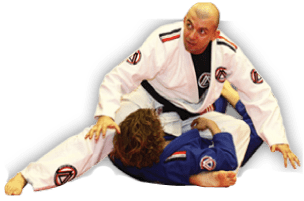Why Should a Traditional Martial Arts Program Incorporate BJJ into their curriculum?
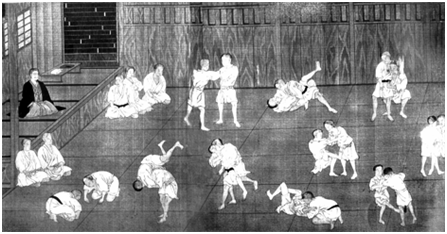
There is no question that traditional martial arts, such as karate, have had a huge impact on martial arts and our society. However, Brazilian Jiu Jitsu is now the fastest growing martial art and there are new schools popping up on every corner. The fact that everyone is wanting to learn BJJ is no secret.
The popularity of mixed martial arts and television programs, such as Spike TV's, "The Ultimate Fighter," have pushed BJJ to even higher levels. This has forced many of the top traditional martial arts school's to add some sort of ground fighting into their curriculum, in order to not lose their current students to the new BJJ schools. We want to help you add this simple aspect into your current school and curriculum without losing what has made it so popular and beloved already.
The gentle art of Brazilian Jiu-Jitsu teaches the use of leverage which creates an effective self-defense system that can be used by every man, woman, and child. Adding this to your already existing program can only help your martial arts academy grow, which in turn will help your school bring in more revenue.
Brazilian Jiu Jitsu History
Jiu-Jitsu, which means “Gentle Art”, is the oldest form of martial arts. It originated in India more than 2000 years before Christ. It was created by monks who could not use any type of weapon to defend theirlives against barbarian attacks. It spread through China, and eventually took root and was elaborated on in Japan, becoming the first martial art style. The samurai clans in Japan adopted Jiu-Jitsu as their own traditional style to defeat an opponent regardless if the opponent was striking (with and without weaponry), throwing or grappling. With the passing years, they split the techniques and developed other martial arts styles, such as Judo, Aikido, Karate, and most of the other martial arts that we have today.
Jiu-Jitsu, unlike other martial arts, did not evolve from one source or root; instead it has multiple roots and traveled through many Asian countries before its final development in Japan.
The development of Jiu-Jitsu techniques started around 5000 years ago. A Babylonian copper stand, dating from the third Millennium B.C., shows two men engaged in a grappling technique found in Jiu-Jitsu. Both men are trying to unbalance each other by controlling the hip. Buddhist Monks in northern India greatly contributed to the early development of Jiu-Jitsu. Bandits constantly assaulted the monks during their long journeys through the interior of India. Buddhist religious and moral values did not encourage the use of weapons so they were forced to develop an empty hand system of self-defense. These Monks were men of great wisdom who possessed a perfect knowledge of the human body. Consequently, they applied laws of physics such as leverage, momentum, balance, center of gravity, friction, weight transmission and manipulation of the human anatomy’s vital points in order to create a scientific art of self-defense. In 230 BC the techniques of Jiu-Jitsu arrived in Japan where the wrestling sport called chikara kurabe was developed. The techniques of this art later served as the base of contemporary Jiu-Jitsu. From 230 BC onward, many different schools of Jiu-Jitsu were formed. Empty hand Jiu-Jitsu techniques were incorporated as part of the samurai warrior's training during the Heian period.
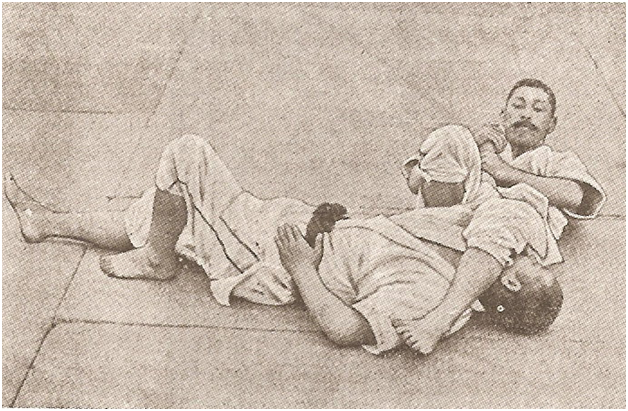
Warriors grapple on the Battlefield
For several years, the grand masters of the Kodokan reigned supreme in Japan. All subsequent challengers representing traditional styles were defeated, and the superiority of the Kodokan appeared unassailable. Then, about the turn of the Nineteenth Century a monumental event occurred when the Kodokan was challenged by a man named Mataemon Tanabe.Tanabe was the headmaster of an obscure system of classical Jiu Jitsu, the Fusen Ryu. The Fusen Ryu was unlike the other Jiu Jitsu styles that had sought to test their techniques against the Kodokan; Fusen Ryu fighters were experts at fighting on the ground, an area conspicuously lacking in the Kodokan’s syllabus of technique (up to this point in its evolution, Judo techniques were almost entirely composed of stand up throwing methods).
In the matches that followed, all representatives of Kodokan were taken to the ground and submitted by the fighters of the Fusen Ryu. The results of the Kodokan-Fusen Ryu matches highlighted the relevance and importance of ground fighting techniques in dramatic fashion, and the head of the Kodokan, Jigoro Kano, invited Tanabe to teach ground grappling at the Kodokan. Ground fighting became very popular at the Kodokan, and all students began practicing both throwing and ground grappling techniques. At about the time the grappling techniques of the Fusen Ryu entered the Kodokan curriculum, a young man named Mitsuyo Maeda began his training.
Master Conde Koma
Mitsuyo Maeda (1878-1941) was a martial arts prodigy who eventually became one of the greatest fighters in history. Maeda originally practiced classical styles of Jiu Jitsu, eventually entering the Kodokan to study this style too.
After remaining undefeated in many competitions, Jigoro Kano sent Maeda to the U.S.A. in 1904 to spread the message of Kodokan. Over the course of his career, Maeda fought in literally hundreds of matches, grappling with and without the gi, and fighting in "mixed" matches (that included striking and kicking, commonly referred to as "no-holds-barred" fights). During his travels, Maeda fought in the United States, Great Britain, continental Europe, Cuba, Mexico and finally Brazil. Throughout his career as a professional fighter, after engaging in over 1,000 free fights, Maeda retired without ever losing a match. The culmination of Maeda's training in classical Jiu Jitsu and especially Judo, tempered by his extensive combat experience against all types of challengers, resulted in a realistic, street effective method of fighting.
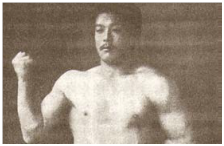
Mitsuyo Maeda Koma in Brazil
Maeda was in Brazil to oversee Japanese immigration into the country. While doing so, he became friends with Gastao Gracie who was instrumental in helping Japanese immigrants establish communities in Brazil.
Maeda was a World Jiu-Jitsu Champion. Around 1908 he did something that was not usually done by teaching Gastao Gracie’s son Carlos the art of Jiu-Jitsu.
After learning traditional Jiu-Jitsu from Maeda, Carlos passed on his knowledge to the others in the family. He then decided to open the first academy in Rio de Janeiro, Brazil. Carlos Gracie was small in stature as were others in the family, so they went on to refine the Jiu-Jitsu Carlos was taught so that anyone of any size could use the techniques. In Brazil anyone could come and test their skill against them. After Carlos’s brother “Helio” who was the current representative of the family lost to a former student name Waldemar Santana the family looked towards Carlos’s eldest son Carlson Gracie.
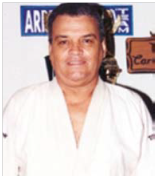
Carlson Gracie
Carlson Gracie (17 yrs old, 72kg) fought Waldemar Santana (94kg). This was Carlson Gracie’s first professional Vale Tudo fight. Carlson revenged Prof. Helio’s loss to Santana. Carlson went on to fight 19 professional matches and remained undefeated. Carlson reigned as world champion for 30 years in the 1950s, 60s and 70s.
Brazilian Jiu Jitsu became world famous in the mid 1990's when Royce Gracie won a string of victories in the early Ultimate Fighting Championship (UFC) competitions, an event pitting martial artists and fighters of various disciplines against each other in an NHB format. Shortly after, Royce's brother Rickson went undefeated in similar events in Japan, after these many Brazilian Jiu Jitsu Fighters were very successful in MMA events around the World.
It became quickly apparent that fighters versed only in punching and kicking lost every time they faced a BJJ trained opponent. Presently, all fighters in open rules events (now popularly called "mixed martial arts" or MMA) train in BJJ to some extent.
These early competitions pitted style versus style, or martial art versus martial art against each other and the Brazilian Jiu-Jitsu fighters consistently defeated other martial artists trained in other styles. Because of this, virtually every martial arts academy has added some form of BJJ to their curriculum.
It can easily be said that Brazilian Jiu-Jitsu is the most effective hand to hand combat art available today, and it is the fastest growing martial art worldwide.
BJJ is divided into three broad categories, each mutually supportive of the others; self-defense (including striking techniques and unarmed techniques against armed opponents), free fighting competition (commonly referred to as "vale tudo" or "anything goes" events, now popularly called MMA), and sport grappling with and without the gi (matches that include a wide range of submission holds, but no striking). Even the rules of sport grappling matches are designed to ingrain the proper strategy to be applied in the street. For example in a sport BJJ match, points are awarded based on achieving superior positions, positions from which not only grappling techniques can be more readily applied, but also from which strikes may be applied or defended. Students naturally seek the positions that will garner them the most points, thereby constantly reinforcing the most efficient strategy for real life confrontations. This "position-submission" strategy has proven to be the most effective for real life confrontations. The overall fighting strategy of Brazilian Jiu Jitsu is designed to equip a physically smaller or weaker individual with an effective method of defending against a larger and stronger attacker. When applying BJJ techniques, leverage is paramount, as leverage is the secret to the amplification and most efficient use of force. BJJ also has the most developed methods of fighting while on one's back, a position weaker fighters will often find themselves in when attacked. The BJJ players today, through constant testing and refinement in the crucible of actual fights, has resulted in this unique style of Brazilian Jiu Jitsu.
Marcello’s Lineage
• At the age of 6 years old Marcello started learning Jiu Jitsu with Alvaro Barreto ( Carlos and Helio Gracie’s student) at the “Corpo Quatro Academy in Copacabana/ Rio De Janeiro/ Brazil. But at that age, Marcello was just a small kid that used to train on and off and he didn’t know how BJJ would change his life.
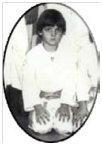
• At the age of 16, Marcello started to take BJJ very serious in his life.
• Many years ago, some of Carlson Gracie’s best students in Brazil were Sergio Souza “Bolao”, Ricardo De La Riva and Ricardo Juca. These were among many BJJ Masters that he had the opportunity to train with and helped his game. Marcello likes to speak about these 3 old masters.
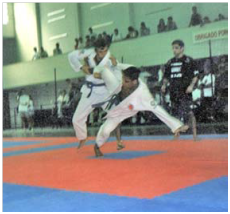
• Sergio Souza helped Marcello’s game for about 1 year. Sergio Souza is best known in Brazil for his butterfly guard.
• De La Riva is best known for his “De La Riva Hook” and Ricardo Juca is best known in Brazil for his fighting strategies for back attacks and mount attacks. Juca also published in the very first BJJ book in Brazil.
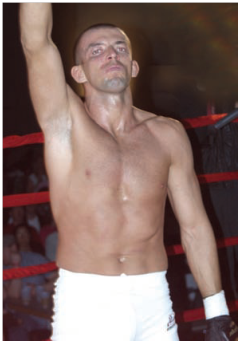
• For many years Marcello was considered De La Riva’s protégé at his academy in Rio de Janeiro/ Brazil. De La Riva showed Marcello all the secret details of his De La Riva Guard game. Juca showed Marcello all his fighting strategies while focusing on teaching Marcello the way he should think during a match.
• Marcello helped De La Riva give lessons at his school when he became a Purple Belt. He continued helping De La Riva’s school for many years, until achieving his Black Belt.
• In 1998 Marcello opened his first Jiu Jitsu school in Nova Friburgo in Rio De Janeiro/Brazil where he has turned regular students into State, National and World Champions. "Marcello always says that he was in the right place at the right time. He learned bjj from the right sources, before it was regarded worldwide as a premier fighting art. Since 2003 Marcello has resided in Indianapolis, Indiana, USA where he keeps continuing to fulfill his dream of spreading his knowledge of Brazilian Jiu-Jitsu. He hopes to continue fulfilling his dream until the day he dies. And hopes that even after he's gone, his knowledge will continue to spread worldwide."
Why Should a Traditional Martial Arts Program Incorporate BJJ into their curriculum?

There is no question that traditional martial arts, such as karate, have had a huge impact on martial arts and our society. However, Brazilian Jiu Jitsu is now the fastest growing martial art and there are new schools popping up on every corner. The fact that everyone is wanting to learn BJJ is no secret.
The popularity of mixed martial arts and television programs, such as Spike TV's, "The Ultimate Fighter," have pushed BJJ to even higher levels. This has forced many of the top traditional martial arts school's to add some sort of ground fighting into their curriculum, in order to not lose their current students to the new BJJ schools. We want to help you add this simple aspect into your current school and curriculum without losing what has made it so popular and beloved already.
The gentle art of Brazilian Jiu-Jitsu teaches the use of leverage which creates an effective self-defense system that can be used by every man, woman, and child. Adding this to your already existing program can only help your martial arts academy grow, which in turn will help your school bring in more revenue.
Brazilian Jiu Jitsu History
Jiu-Jitsu, which means “Gentle Art”, is the oldest form of martial arts. It originated in India more than 2000 years before Christ. It was created by monks who could not use any type of weapon to defend theirlives against barbarian attacks. It spread through China, and eventually took root and was elaborated on in Japan, becoming the first martial art style. The samurai clans in Japan adopted Jiu-Jitsu as their own traditional style to defeat an opponent regardless if the opponent was striking (with and without weaponry), throwing or grappling. With the passing years, they split the techniques and developed other martial arts styles, such as Judo, Aikido, Karate, and most of the other martial arts that we have today.
Jiu-Jitsu, unlike other martial arts, did not evolve from one source or root; instead it has multiple roots and traveled through many Asian countries before its final development in Japan.
The development of Jiu-Jitsu techniques started around 5000 years ago. A Babylonian copper stand, dating from the third Millennium B.C., shows two men engaged in a grappling technique found in Jiu-Jitsu. Both men are trying to unbalance each other by controlling the hip. Buddhist Monks in northern India greatly contributed to the early development of Jiu-Jitsu. Bandits constantly assaulted the monks during their long journeys through the interior of India. Buddhist religious and moral values did not encourage the use of weapons so they were forced to develop an empty hand system of self-defense. These Monks were men of great wisdom who possessed a perfect knowledge of the human body. Consequently, they applied laws of physics such as leverage, momentum, balance, center of gravity, friction, weight transmission and manipulation of the human anatomy’s vital points in order to create a scientific art of self-defense. In 230 BC the techniques of Jiu-Jitsu arrived in Japan where the wrestling sport called chikara kurabe was developed. The techniques of this art later served as the base of contemporary Jiu-Jitsu. From 230 BC onward, many different schools of Jiu-Jitsu were formed. Empty hand Jiu-Jitsu techniques were incorporated as part of the samurai warrior's training during the Heian period.

Warriors grapple on the Battlefield
For several years, the grand masters of the Kodokan reigned supreme in Japan. All subsequent challengers representing traditional styles were defeated, and the superiority of the Kodokan appeared unassailable. Then, about the turn of the Nineteenth Century a monumental event occurred when the Kodokan was challenged by a man named Mataemon Tanabe.Tanabe was the headmaster of an obscure system of classical Jiu Jitsu, the Fusen Ryu. The Fusen Ryu was unlike the other Jiu Jitsu styles that had sought to test their techniques against the Kodokan; Fusen Ryu fighters were experts at fighting on the ground, an area conspicuously lacking in the Kodokan’s syllabus of technique (up to this point in its evolution, Judo techniques were almost entirely composed of stand up throwing methods).
In the matches that followed, all representatives of Kodokan were taken to the ground and submitted by the fighters of the Fusen Ryu. The results of the Kodokan-Fusen Ryu matches highlighted the relevance and importance of ground fighting techniques in dramatic fashion, and the head of the Kodokan, Jigoro Kano, invited Tanabe to teach ground grappling at the Kodokan. Ground fighting became very popular at the Kodokan, and all students began practicing both throwing and ground grappling techniques. At about the time the grappling techniques of the Fusen Ryu entered the Kodokan curriculum, a young man named Mitsuyo Maeda began his training.
Master Conde Koma
Mitsuyo Maeda (1878-1941) was a martial arts prodigy who eventually became one of the greatest fighters in history. Maeda originally practiced classical styles of Jiu Jitsu, eventually entering the Kodokan to study this style too.
After remaining undefeated in many competitions, Jigoro Kano sent Maeda to the U.S.A. in 1904 to spread the message of Kodokan. Over the course of his career, Maeda fought in literally hundreds of matches, grappling with and without the gi, and fighting in "mixed" matches (that included striking and kicking, commonly referred to as "no-holds-barred" fights). During his travels, Maeda fought in the United States, Great Britain, continental Europe, Cuba, Mexico and finally Brazil. Throughout his career as a professional fighter, after engaging in over 1,000 free fights, Maeda retired without ever losing a match. The culmination of Maeda's training in classical Jiu Jitsu and especially Judo, tempered by his extensive combat experience against all types of challengers, resulted in a realistic, street effective method of fighting.

Mitsuyo Maeda Koma in Brazil
Maeda was in Brazil to oversee Japanese immigration into the country. While doing so, he became friends with Gastao Gracie who was instrumental in helping Japanese immigrants establish communities in Brazil.
Maeda was a World Jiu-Jitsu Champion. Around 1908 he did something that was not usually done by teaching Gastao Gracie’s son Carlos the art of Jiu-Jitsu.
After learning traditional Jiu-Jitsu from Maeda, Carlos passed on his knowledge to the others in the family. He then decided to open the first academy in Rio de Janeiro, Brazil. Carlos Gracie was small in stature as were others in the family, so they went on to refine the Jiu-Jitsu Carlos was taught so that anyone of any size could use the techniques. In Brazil anyone could come and test their skill against them. After Carlos’s brother “Helio” who was the current representative of the family lost to a former student name Waldemar Santana the family looked towards Carlos’s eldest son Carlson Gracie.

Carlson Gracie
Carlson Gracie (17 yrs old, 72kg) fought Waldemar Santana (94kg). This was Carlson Gracie’s first professional Vale Tudo fight. Carlson revenged Prof. Helio’s loss to Santana. Carlson went on to fight 19 professional matches and remained undefeated. Carlson reigned as world champion for 30 years in the 1950s, 60s and 70s.
Brazilian Jiu Jitsu became world famous in the mid 1990's when Royce Gracie won a string of victories in the early Ultimate Fighting Championship (UFC) competitions, an event pitting martial artists and fighters of various disciplines against each other in an NHB format. Shortly after, Royce's brother Rickson went undefeated in similar events in Japan, after these many Brazilian Jiu Jitsu Fighters were very successful in MMA events around the World.
It became quickly apparent that fighters versed only in punching and kicking lost every time they faced a BJJ trained opponent. Presently, all fighters in open rules events (now popularly called "mixed martial arts" or MMA) train in BJJ to some extent.
These early competitions pitted style versus style, or martial art versus martial art against each other and the Brazilian Jiu-Jitsu fighters consistently defeated other martial artists trained in other styles. Because of this, virtually every martial arts academy has added some form of BJJ to their curriculum.
It can easily be said that Brazilian Jiu-Jitsu is the most effective hand to hand combat art available today, and it is the fastest growing martial art worldwide.
BJJ is divided into three broad categories, each mutually supportive of the others; self-defense (including striking techniques and unarmed techniques against armed opponents), free fighting competition (commonly referred to as "vale tudo" or "anything goes" events, now popularly called MMA), and sport grappling with and without the gi (matches that include a wide range of submission holds, but no striking). Even the rules of sport grappling matches are designed to ingrain the proper strategy to be applied in the street. For example in a sport BJJ match, points are awarded based on achieving superior positions, positions from which not only grappling techniques can be more readily applied, but also from which strikes may be applied or defended. Students naturally seek the positions that will garner them the most points, thereby constantly reinforcing the most efficient strategy for real life confrontations. This "position-submission" strategy has proven to be the most effective for real life confrontations. The overall fighting strategy of Brazilian Jiu Jitsu is designed to equip a physically smaller or weaker individual with an effective method of defending against a larger and stronger attacker. When applying BJJ techniques, leverage is paramount, as leverage is the secret to the amplification and most efficient use of force. BJJ also has the most developed methods of fighting while on one's back, a position weaker fighters will often find themselves in when attacked. The BJJ players today, through constant testing and refinement in the crucible of actual fights, has resulted in this unique style of Brazilian Jiu Jitsu.
Marcello’s Lineage
• At the age of 6 years old Marcello started learning Jiu Jitsu with Alvaro Barreto ( Carlos and Helio Gracie’s student) at the “Corpo Quatro Academy in Copacabana/ Rio De Janeiro/ Brazil. But at that age, Marcello was just a small kid that used to train on and off and he didn’t know how BJJ would change his life.

• At the age of 16, Marcello started to take BJJ very serious in his life.
• Many years ago, some of Carlson Gracie’s best students in Brazil were Sergio Souza “Bolao”, Ricardo De La Riva and Ricardo Juca. These were among many BJJ Masters that he had the opportunity to train with and helped his game. Marcello likes to speak about these 3 old masters.

• Sergio Souza helped Marcello’s game for about 1 year. Sergio Souza is best known in Brazil for his butterfly guard.
• De La Riva is best known for his “De La Riva Hook” and Ricardo Juca is best known in Brazil for his fighting strategies for back attacks and mount attacks. Juca also published in the very first BJJ book in Brazil.

• For many years Marcello was considered De La Riva’s protégé at his academy in Rio de Janeiro/ Brazil. De La Riva showed Marcello all the secret details of his De La Riva Guard game. Juca showed Marcello all his fighting strategies while focusing on teaching Marcello the way he should think during a match.
• Marcello helped De La Riva give lessons at his school when he became a Purple Belt. He continued helping De La Riva’s school for many years, until achieving his Black Belt.
• In 1998 Marcello opened his first Jiu Jitsu school in Nova Friburgo in Rio De Janeiro/Brazil where he has turned regular students into State, National and World Champions. "Marcello always says that he was in the right place at the right time. He learned bjj from the right sources, before it was regarded worldwide as a premier fighting art. Since 2003 Marcello has resided in Indianapolis, Indiana, USA where he keeps continuing to fulfill his dream of spreading his knowledge of Brazilian Jiu-Jitsu. He hopes to continue fulfilling his dream until the day he dies. And hopes that even after he's gone, his knowledge will continue to spread worldwide."


